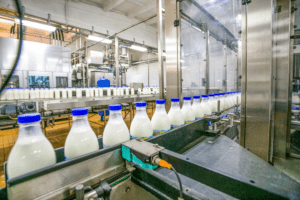Why Micro Data Centers are Crucial to the Digitization of Consumer Packaged Goods Companies
Credit to Author: Paolo Colombo| Date: Fri, 06 Sep 2019 15:05:00 +0000
The trend toward digitization of nearly all aspects of operations can bring significant business benefits to companies in the consumer packaged goods (CPG) industry. But those benefits will only be realized if companies have fast, reliable access to data, which is driving another trend: the need for industrial edge data centers.

Benefits of digitization
First, let’s discuss the various benefits that digitization can bring for CPG companies.
One is traceability, which is important for companies in the food and beverage industry, pharmaceuticals and more. To meet industry regulations, they increasingly need to trace every part of their processes and potentially those of their suppliers. A milk producer, for example, has to trace where the milk came from, where it was bottled, and where it’s ultimately sold. Digitization, with technologies such as bar codes, sensors and RFID readers, makes the process feasible – but it produces a lot of data.
Monitoring their supply chain can also help any company more quickly respond to changing consumer needs and trends. If a supplier can tell that supermarkets are beginning to sell more raspberry yogurt than they historically did, the producer can ramp up production to meet demand.
By the same token, CPG companies can also use this data to detect bottlenecks in their production chain and take steps to correct them, as opposed to simply adding more machines to increase production.
Digitization also helps improve productivity and lower costs through predictive maintenance. Today it’s possible to instrument all the various machines involved in CPG factories with sensors or software that report on the health of the machines. Companies can collect all the data and feed it to an analytics engine that can detect when a given machine begins to perform outside the established baseline. At that point the company can schedule maintenance for the machine at a time when it won’t disrupt production. That’s far better than the machine failing in the middle of a production run, or having the company perform maintenance on it that’s not necessary.
Achieving all of these potential benefits requires companies be able to handle a steady stream of real-time data, and lots of it. Sending data to the cloud for processing is not an option in these instances, because the latency involved will be too great – not to mention the cost.
Challenges in building industrial edge data centers
Rather, CPG firms need a way to process the data close to its source, namely in an industrial edge data center. Edge data centers can take many forms. They may co-exist with machinery on the factory floor, in a dedicated room within the facility, or be located outside the facility in an enclosed container.
No matter the exact approach, CPG companies do face some challenges in building industrial edge data centers. One is deploying them in facilities that are not IT environments, such as a factory floor. That’s an issue because no matter where they’re deployed, an edge data center has to achieve the same resiliency and redundancy as a traditional data center, because the data they’re handling is so important to the business.
By nature, edge data centers are decentralized and distributed, which can make them difficult to manage from both an IT and facilities perspective. Companies also need edge data center designs that are standardized and repeatable across potentially hundreds or thousands of global locations, so they’re not re-inventing the wheel with each one.
Micro data centers: a fit for the industrial edge
Micro data centers address each of these challenges. Micro data centers are small data centers that come in an enclosure that includes all required IT and facilities equipment, including power, cooling and UPSs. They can come in various shapes and sizes, including self-enclosed units that can be placed on a factory floor as well as models intended to be placed outdoors, even in harsh environments.
When built correctly, a micro data center provides the same redundancy and battery backup features of a centralized data center. The IT gear and supporting infrastructure within them can also be remotely managed from a centralized location. Finally, micro data center designs are fully repeatable, so they can be deployed quickly in the same way every time, anywhere across the globe.
A complete micro data center ecosystem
In my experience I have found that an integrated ecosystem is vital in providing micro data centers that deliver on all of those attributes. This includes design tools to help CPG companies configure the data center exactly to their needs and a strong partner network to help deliver it anywhere they may need it, as well as a robust network of IT alliance partners – Dell/EMC, Cisco, HPE, Scale, Lenovo and ConnectWise – that ensures you also have ample choice in terms of IT equipment.
Micro data centers can help CPG companies ensure they take advantage of the benefits that digitization offers by ensuring they can handle real-time data efficiently and reliably. To learn more, visit the our micro data center page.
The post Why Micro Data Centers are Crucial to the Digitization of Consumer Packaged Goods Companies appeared first on Schneider Electric Blog.